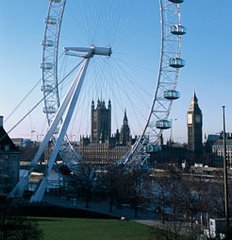
China syndrome: Qin (pronounced 'chin') gave his name to modern China
Qin Shi Huang is a remarkable figure. He became king of Qin at the tender age of 13 back in 247BC. At the time what we know as China was a collection of warring states, of which Qin was one. The soon-to-be emperor set about unifying these states, and due to a combination of superior numbers and advanced weaponry the disparate territories fell to the Qin one by one. One of the improvements Qin Shi Huang introduced was the mass production of weapons, all were made to a blueprint so that if a part broke in battle it could simply be replaced, instead of rendering the weapon useless. The Qin were also extraordinary horsemen, giving them an advantage on the battlefield.
Qin Shi Huang united China in 221BC. He had built a network of palaces that reflected the constellations to illustrate his leadership over the heavens as well as earth. He also invented a new title for himself: emperor, to show his eminance over the other kings of China. While all this building above ground was going on, Qin was also having created an underground necropolis to cater for his death.
The tomb covers approximately four square miles; it took 700,000 conscripts 36 years to complete the mausoleum, and many of them would have been buried alive with the emperor (just one of the ghoulish facts you'll learn at the exhibition). According to Chinese historian Sima Qian, writing less than a century after the emperor's death, the tomb was filled with rare jewels, money, a map of the heavens and a map of China, with mercury representing seas and rivers. Along with all these riches, of course, were the Terracotta Army - a 7,000-strong regiment created to defend the emperor in death.

Toy soldiers: the warriors were mass produced, master craftsmen then added individual features such as moustaches or plaits
The head of one of the soldiers was discovered by a farmer in 1974, spawning an enormous exploration of the area. The exhibition charts this discovery and gives an insight into how the army was discovered and put back together. It shows how the figures were made, with each individual soldier given its own 'personality'. The First Emperor combines artefacts and information about the tomb, how it was created and the contents. The heart of the exhibition is a collection of terracotta warriors, and it is quite amazing to see them in formation. Each standing six feet or above, they are intimidating, even though their weapons have long since rotted away, and the level of detail is breathtaking - from their plaited hair to their hobnailed boots.
The audio tour, at £3.50, is definitely worth the extra cost. It contains much more information than that given on the cards describing each artefact and helps give a more detailed picture of the emperor and his final resting place.
The exhibition is fascinating, the number of exhibits and the trouble the curators have gone to to give a huge amount of information is incredible. And the down sides? Well it was very busy. At times it was simply a matter of standing in line waiting to see the next exhibit. And with all those bodies it got uncomfortably hot. But that's no reason not to go. And you really should, before these wonderful warriors return home, I can honestly say it's an opportunity of a lifetime. The exhibition runs until 6 April 2008 and tickets cost £12. I recommend advance booking.
So was Sima Qian right? Well as yet no one knows - the actual tomb has not yet been excavated. But tests have shown the soil to have an unusual amount of mercury.
Links
The British Museum

2 comments:
I saw the First Emperor exhibit and had mixed feelings. What they had was impressive- but they didn't really seem to have very much of it on display. Plus, as you said it was very crowded and involved a lot of queing. Still, glad I saw it though.
Stephanie
www.exploringtheunrealcity.blogspot.com
Hey im going to london for the fist time, and only for ONE DAY! =( is taking the LONDON sightseeing tour bus more worth my money or just buy a day pass to travel around? Any idea?
Post a Comment